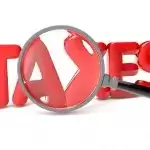 Business owners engaged in fraudulent activities often try to manipulate their companies’ financial statements. Fortunately for fraud experts, business owners’ tax returns aren’t as easy to misrepresent. Here’s how experts use them to locate hidden assets and income.
Business owners engaged in fraudulent activities often try to manipulate their companies’ financial statements. Fortunately for fraud experts, business owners’ tax returns aren’t as easy to misrepresent. Here’s how experts use them to locate hidden assets and income.
Seeking buried treasure
Certain items are more likely to provide information about hidden assets and income sources. These include:
Form 1040, Line 1 — Income from wages, etc. If the individual receives wages from several businesses, it may be possible to discover previously undisclosed business interests.
Form 1040, Line 2a — Tax-exempt interest income. This income may reveal other investment assets.
Form 1040, Line 4a — Retirement plan distributions. These funds can be traced to determine whether they were rolled over into other tax-deferred plans or used for another purpose.
Form 1040, Line 19 — Refund. Dishonest owners and unscrupulous spouses have been known to overpay taxes in previous years and then seek a refund after the dust has settled.
Schedule A — Itemized deductions. A comparison of real estate taxes with taxes on disclosed property may show additional income resulting from hidden real estate assets. Similarly, entries for state and local taxes, personal property taxes and investment interest paid may reveal the existence of undisclosed assets.
Schedule B — Interest and ordinary dividends. It’s important to pay close attention to any reported foreign accounts or trusts. If the taxpayer has set up an asset protection trust in a foreign country with strict secrecy laws, this may be the only evidence that such a trust exists.
Schedule C — Profit or loss from a sole proprietorship. Depreciation expenses may show that the owner has valuable business equipment. Entries for mortgage interest as well as pension and profit-sharing plans may reveal other undisclosed assets.
Schedule D — Capital gains and losses. Experts review any transactions reported here and make sure the business has accounted for all sales proceeds. A large decrease in a taxpayer’s net worth from one year to another may indicate an asset sale.
Schedule E — Supplemental income and loss. Income from rental properties, royalties, partnerships, S corporations, estates and trusts may reveal information about the taxpayer’s assets and business interests. Income and expenses that seem suspicious or unreasonable can indicate that these entities are being used to conceal assets.
Note that, following passage of the Tax Cuts and Jobs Act, significant changes were made to Form 1040 beginning with the 2018 tax year. Line numbers for items on tax returns for earlier years are different from those noted here.
Successfully using data
Tax returns — especially several years’ worth obtained early in an investigation — can help support a successful legal action. Contact us if we can help.
© 2019

lanasa@hwco.com




